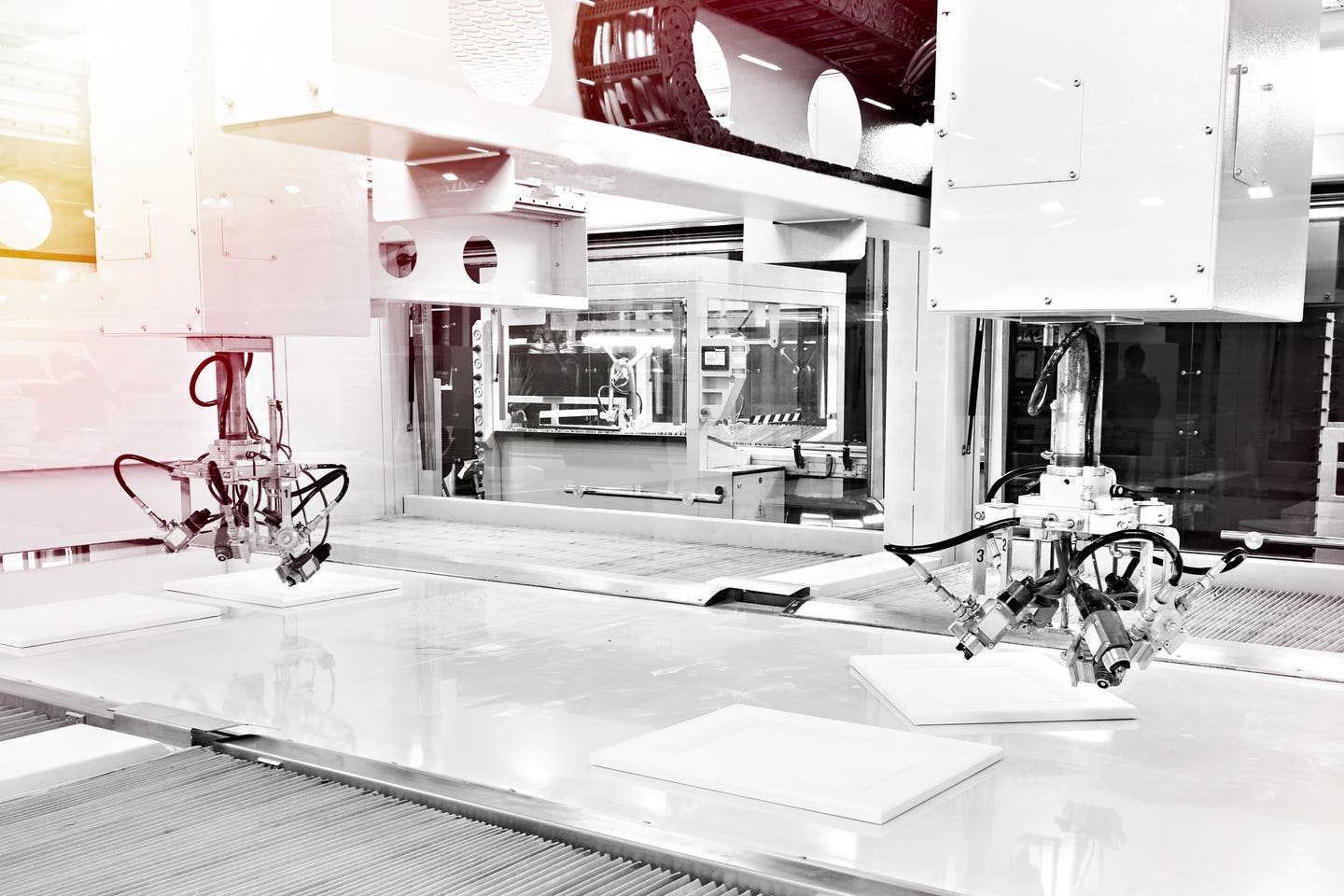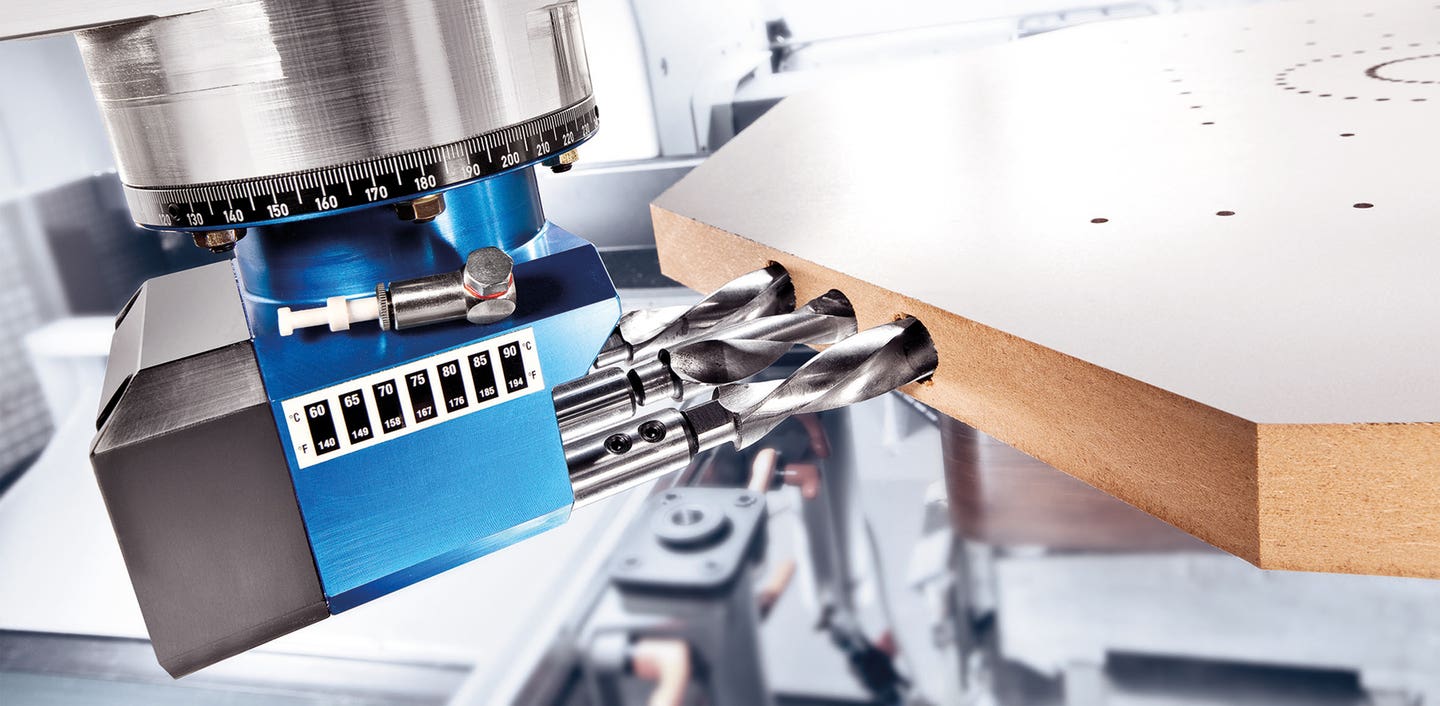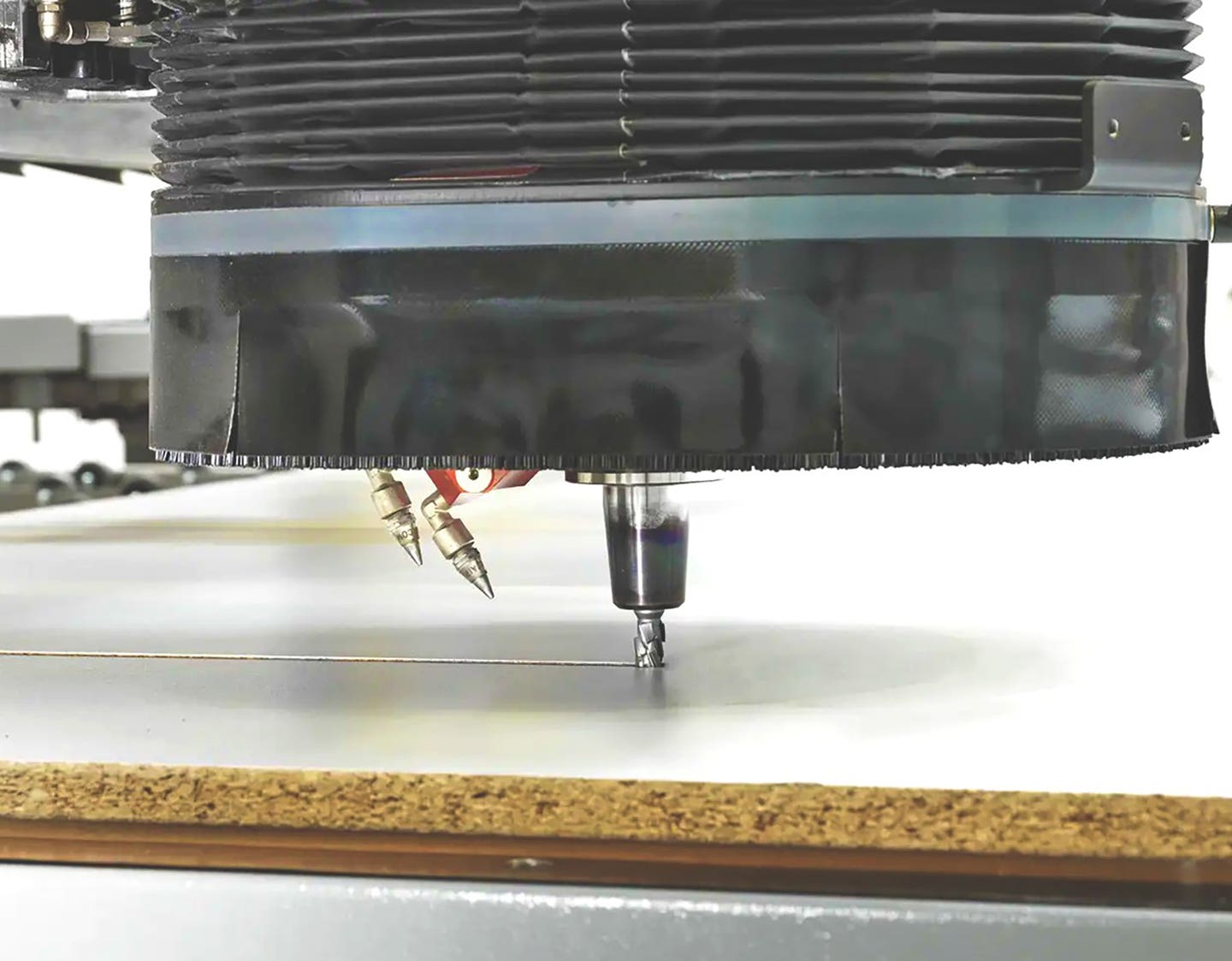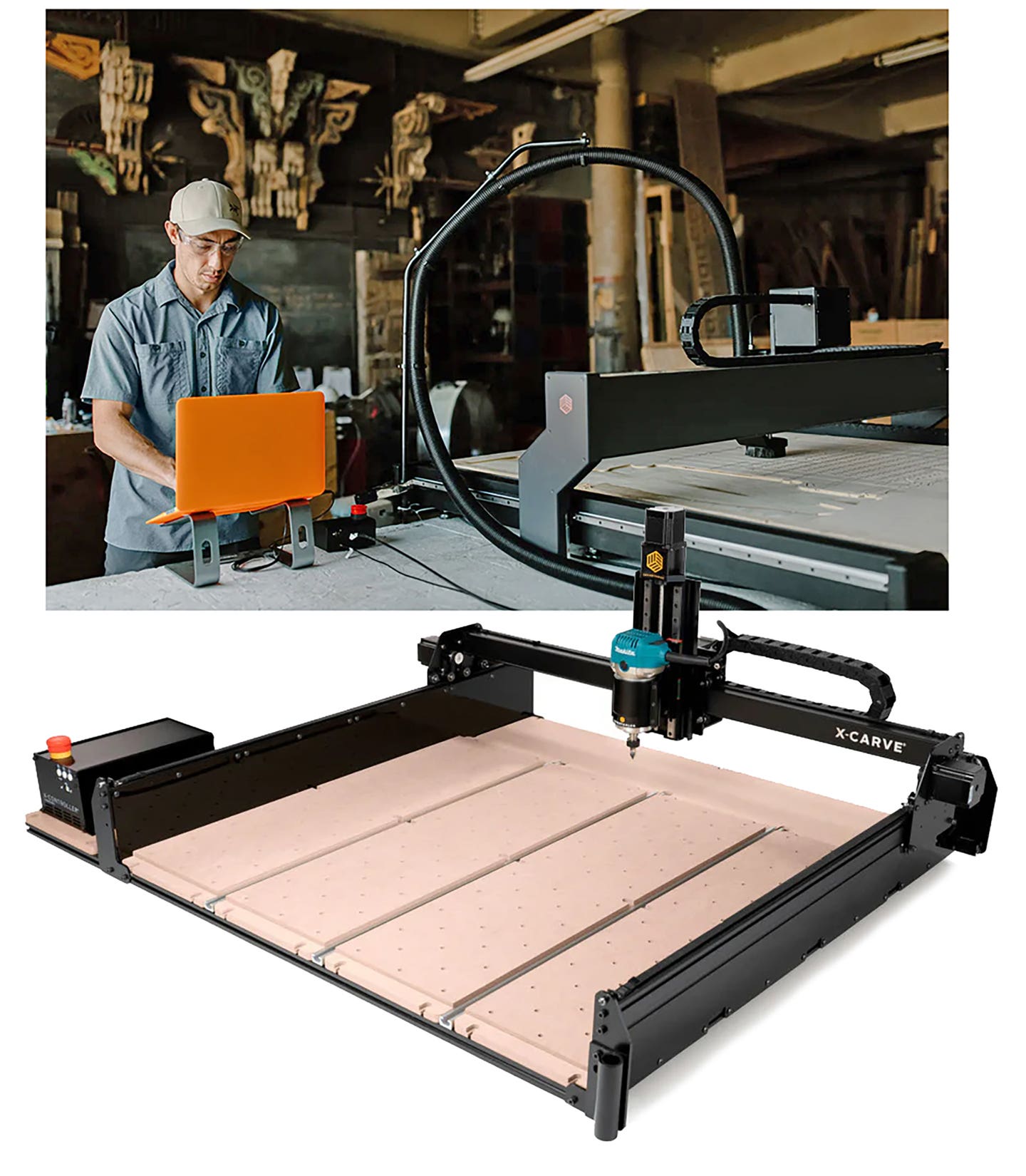Where in the world ?
Sometimes it seems there are more tools than cabinets on an install. Custom casework often has to work around obstacles and making things fit perfectly means having the right tools…
Sometimes it seems there are more tools than cabinets on an install. Custom casework often has to work around obstacles and making things fit perfectly means having the right tools available. In a remote location, that means hauling everything to the site, from generators to glue guns. It takes a little planning to keep track of all the job-site tools, protect them from weather and sticky fingers and organize them so they can be found easily when they’re needed.
Battery basics
Cordless job-site tools have made our lives a lot simpler, but lithium-ion batteries can be a bit sensitive. For example, they don’t like heat. One of the quickest ways to shorten the life of a drill’s power pack is to leave it fully charged in direct summer sunlight in a vehicle. They’re a lot like us: they prefer room temperature. If an install is going to take several days in a building that isn’t climate-controlled, it’s a good idea to bring the batteries back to the shop at night to recharge. Manufacturers suggest storing virtually all batteries in a cool and dry environment (surprisingly, not in the fridge unless specifically noted in the manual). Like excessive heat, moisture is bad for batteries, too. So protect them from rain, snow and long periods of high humidity such as might be found in an unvented attic.
One shouldn’t leave batteries fully charged if they’re not going to be used any time soon. It’s best to drain them down to half power (or even a little less) if they’re going to sit around and be unemployed for a while. At full charge sitting on a shelf, they deteriorate more rapidly.
Lithium-ion batteries also have a shelf life that has more to do with the number of months they’ve been around than the number of hours they’ve been used. The day they leave the factory, they start failing. It’s always a good idea to have a spare power pack on the job, but don’t invest in any extra batteries beyond that until you actually need them. The fresher they are, the better. When buying, see if you can find a manufactured date on the packaging. The ones at the back of the hardware store shelf are probably the most recent, as retailers tend to stock the newest ones to the back since they learned about lithium-ion’s shelf-life problems. Just like milk and bread in the grocery story, inventory is dated.
Remember when nickel-cadmium batteries came out, we were all told to completely discharge them every now and then so they could recharge fully? The word on lithium-ion cells is that it’s imperative that they don’t fully discharge (the practice is called “deep drain”). A substantial, but not complete, drain once every few months is a good thing, because it recalibrates the battery. But if you completely drain a lithium-ion cell, then it probably won’t take another charge. There is a safety feature built into these batteries that prevents them from doing so.
If you’re running nickel-cadmium batteries in your power tools, then you should run them all the way down about once a month or when they don’t seem to be taking a charge well. They have a characteristic called “memory effect” that requires a deep drain to recalibrate. And both lithium-ion and nickel-cadmium last longer if they are recharged regularly when they’re somewhere in the region of half- and three-quarters capacity, rather than using them until the drill gives up the ghost. They do best when they are fully topped off every time they’re charged. That means waiting until the little light turns from red to green (or whatever system your manufacturer uses), before removing the battery from its charger. And don’t leave the battery in the charger for a long time once the light changes (unless the manual says to), especially if your charger is a little older. Some of them don’t automatically stop charging and this can damage the battery, shorten its useful life and, in remote cases, could even cause it to overheat.
Almost all batteries seem to last longer the more regularly they are used, so it’s a good idea to use two and switch between them constantly, rather than using one all the time and having the second just sitting in a cabinet as a spare.
One thing a lot of woodworkers don’t think about is the switch on the drill/driver. Most tools come with two or more speeds/torque settings. A charged battery will last longer when it’s being used with lower settings and, for most tasks, we don’t always need full power.
Storing your job-site tools
Tools are enticing to crooks. And other subcontractors, who own something similar, can even pick them up quite innocently on a job site. I once had to drive 30 miles to reclaim a Milwaukee Sawzall from an electrician who swore it was his until his wife discovered he had two.
Equipment needs to be protected from the weather, too. Rain, snow and even sunlight can shorten the life of a tool. But often the biggest challenge isn’t security or Mother Nature. It’s just being organized on site and finding what you need without wasting time. That takes some planning before the truck is loaded. Cabinet installers really need two solutions here. They need a place to store things securely and in an ordered way and they often need some kind of worktop or portable bench, too. At times, the solution is to combine these.
Durham Manufacturing Co. (www.durhammfg.com) has been working on this problem since 1922. Its two-sided cart (model 662-95) can hold up to 1,000 lbs. of tools in a dozen small drawers immediately beneath the worktop, a dozen bins on one side that are ideal for cordless drills or routers and a large lockable compartment with four shelves on the other side that provides security. The worktop is steel with a non-skid rubber mat, so it’s handy for sanding small parts on site. There’s a rim around the edge to stop stuff from falling on the floor and a shop could make a wooden insert for the top that was a hair higher than the rim so an installer could work on larger drawers and doors without marring the finish. Street price for the 662-95 is about $725.
A much more lightweight solution is available at Wal-Mart and other big box stores. The FatMax 4-in-1 Mobile Work Station (Stanley product 020800R) is designed for weekend woodworkers, but could be an elegant job-site solution for professionals, too. It includes a toolbox, part bins, a portable tray and an oversized lower bin for larger tools. While it’s made from lightweight tubular steel and structural foam, it does allow a woodworker easy access to all four storage sections simultaneously, which makes it a lot easier to find a specific tool. The handle telescopes so one doesn’t have to bend over to move the unit from the truck to the kitchen and the whole system locks with a single latch and a padlock you supply. When the top lid is closed, there’s a V-groove in it that helps when cutting small moldings to length.
A similar solution comes from Sears. The model 7191709 mobile tool chest has a central locking mechanism and an interior that’s designed to maximize space. The unit is designed for easy compartmentalization: two top bins slide apart to reveal a large bin underneath and these, when combined, provide 18-gallon capacity. A woodworker can keep the most frequently used small items up top and easily get to bigger tools below when needed. There’s a retractable handle and a central locking mechanism. The 7191709 is made from a durable resin, so it’s lightweight (60-lb. capacity) yet rugged enough for the job site. For information, visit www.sears.com and search for item No. 00937446000.
An upright version of the Sears concept, the C41 from Beta Tools (www.beta-tools.com) looks a lot like luggage on steroids. It’s a two-module tool trolley — a cabinet on wheels with a removable toolbox on top. The built-in casters make it easy to haul up steps and the ball-bearing drawer slides and engineered plastic make it tough enough for daily use.
If the C41 isn’t big enough, Beta also offers the C28O SuperTank Trolley, which is a mobile workbench with 10 drawers (available as a special order through www.walmart.com and similar retailers). It has two fixed and two steering caters and the latter are locking. There are two centralized safety locks on the bench, so job-site security isn’t a big issue. The top is multiply wood with holes for an optional vice (1599F/150).
Numerous companies such as Keter, DeWalt and Stanley offer a whole range of similar products, although many of them are only available overseas. British and European service technicians and installers have been fond of them for a long time, but demand for these clever compact and portable tool storage and workbench units is definitely on the rise here in the U.S. and Canada. As the need increases, more solutions will appear.
This article originally appeared in the April 2015 issue.







